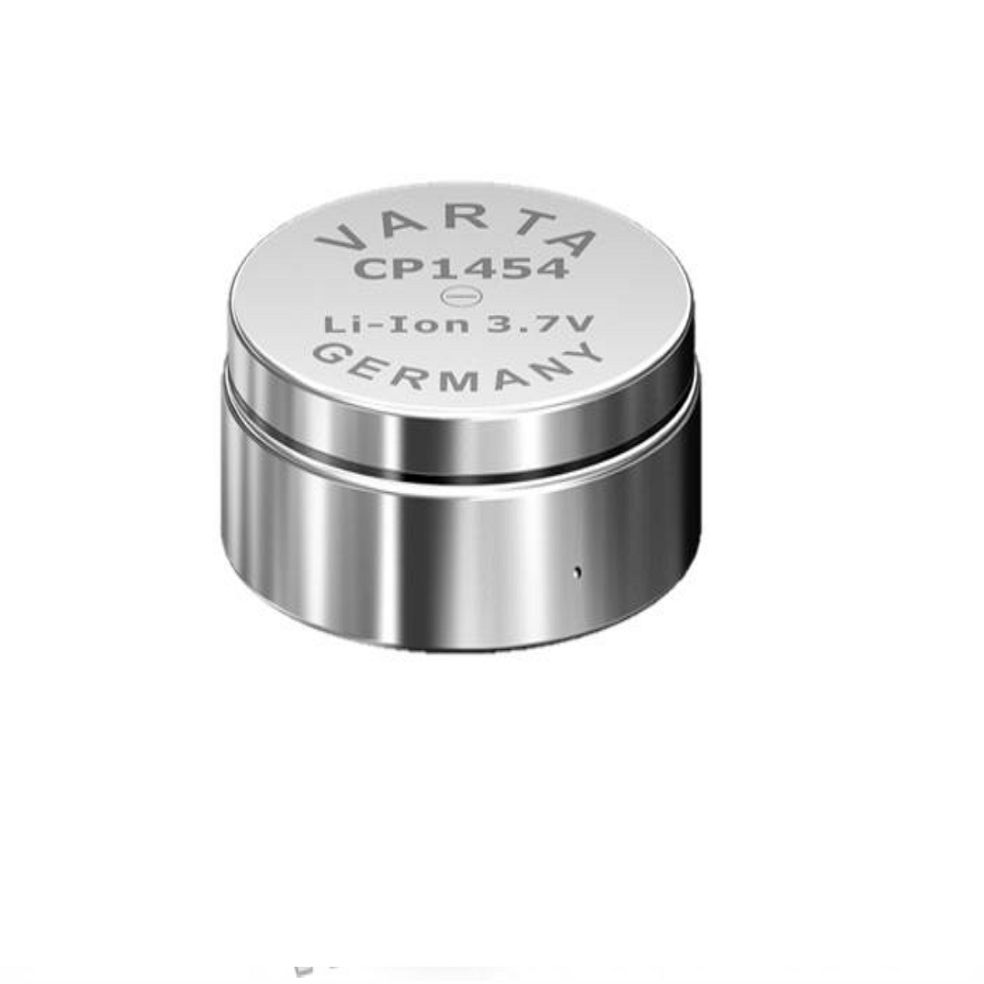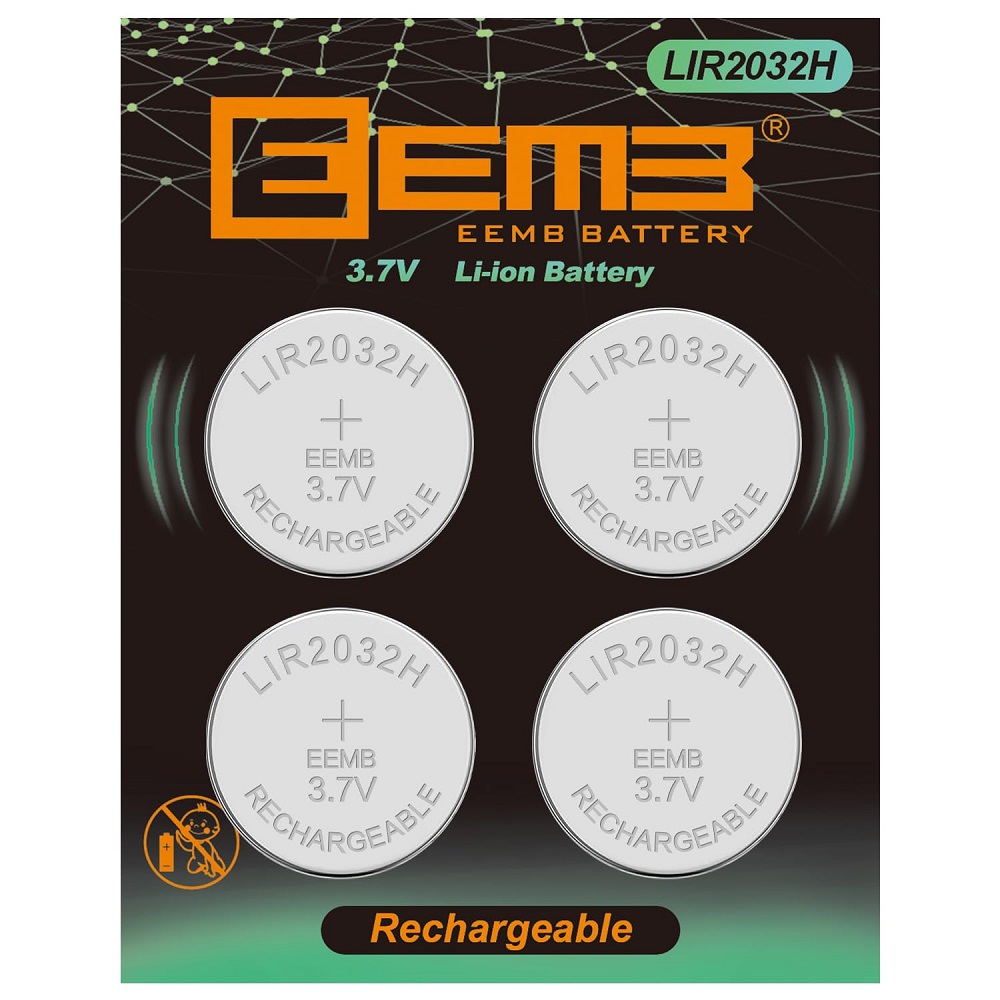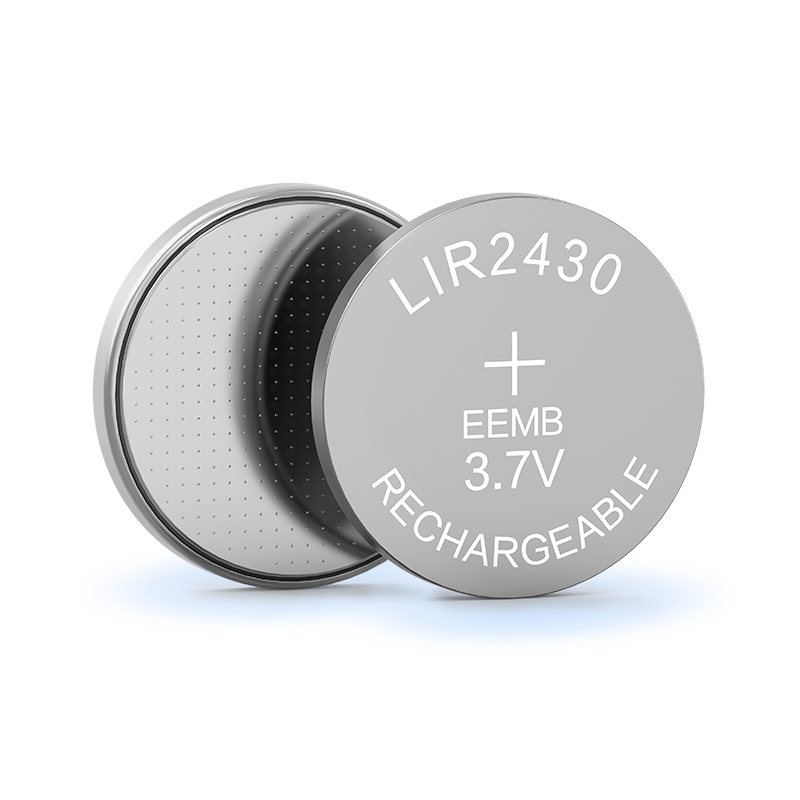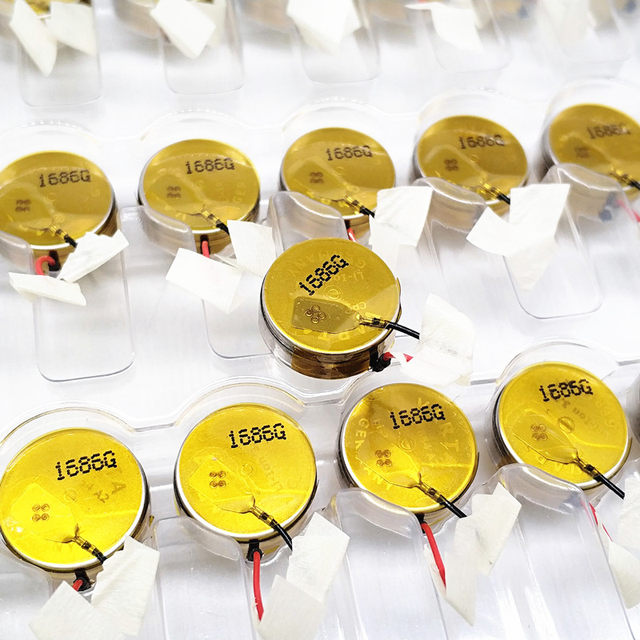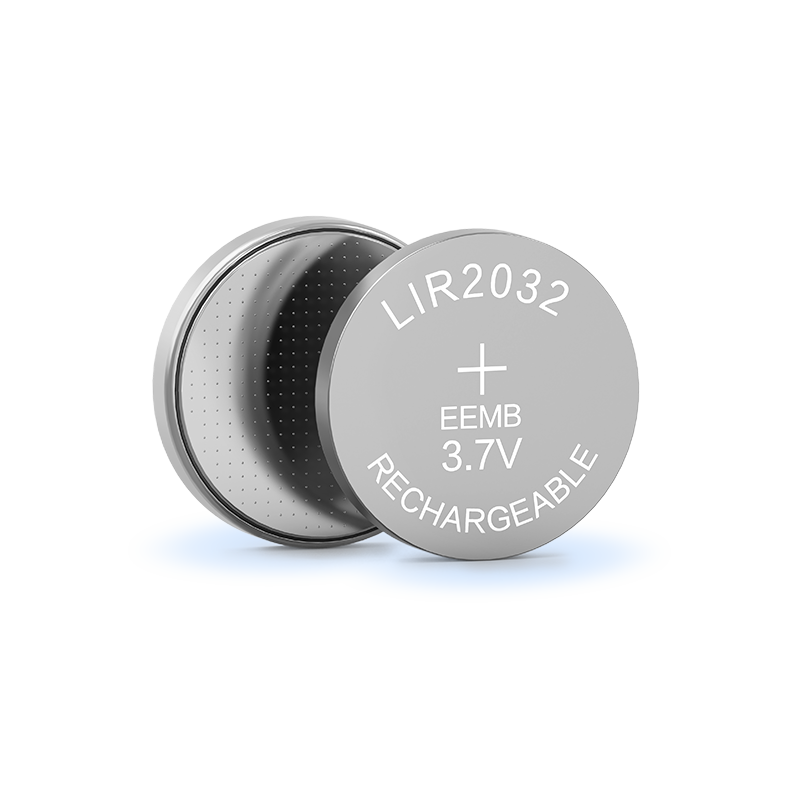Introduction
Rechargeable button batteries, also known as coin cells, play a crucial role in powering our everyday devices. They are compact and lightweight, making them ideal for gadgets that require a small power source. In this article, we will explore the various aspects of rechargeable button batteries. We will discuss their types, applications, advantages, disadvantages, and future trends.
The Basics of Button Batteries: What You Need to Know
Button batteries are small, round batteries typically used to power devices like watches, cameras, remote controls, and toys. Their compact size makes them a popular choice for devices where space is limited. While some button batteries are single-use, many rechargeable versions are gaining traction. This increased popularity stems from a push toward sustainability and the need for longer-lasting power sources.
Types of Button Batteries
Rechargeable button batteries come in several types, primarily lithium-ion (Li-ion) and nickel-metal hydride (NiMH). These batteries use different technologies and materials but serve the same purpose: to provide reliable power in a compact form.
Lithium-ion Batteries
Lithium-ion button batteries are known for their high energy density. This means that they can store a lot of energy in a small size. They are commonly found in devices like hearing aids and medical equipment. Their lightweight design and long cycle life make them attractive to both manufacturers and consumers.
Nickel-Metal Hydride Batteries
NiMH button batteries offer a different set of advantages. They are more environmentally friendly compared to lithium batteries. Additionally, they are generally less expensive. However, they may have a shorter shelf life. This can make them less appealing for devices that require a long standby time.
Both types have their pros and cons. The choice between Li-ion and NiMH depends on the intended use. For high-drain devices, lithium-ion batteries usually perform better. For less demanding applications, NiMH may suffice.
Applications of Rechargeable Button Batteries
Rechargeable button batteries are used in various applications. They have evolved from simple gadgets to more complex devices, powering everything from wearables to medical devices. Let’s take a closer look at some common applications.
Powered Devices
Watches
Traditional quartz watches often rely on button batteries. With the rise of smartwatches, rechargeable button batteries have become indispensable. Smartwatches require more power due to their features, including GPS tracking and notifications. The transition from disposable to rechargeable batteries has increased convenience, enabling users to charge their watches overnight without the hassle of constantly replacing batteries.
Remote Controls
Remote controls for televisions and other electronics also use button batteries. Many manufacturers are now opting for rechargeable versions. This shift reduces waste and ensures seamless functionality without the need for frequent battery replacements. Users can simply place their remote on a charging dock, making it easy to keep devices powered.
Medical Devices
Medical devices benefit significantly from rechargeable button batteries. Devices like glucose meters and hearing aids often utilize these batteries. In these applications, reliability is paramount. The rechargeable aspect ensures that patients always have access to essential tools without the worry of running out of power.
Emerging Technologies
Wearable Technology
The rise of wearable technology has introduced a whole new market for rechargeable button batteries. Fitness trackers and health-monitoring devices often find themselves relying on these small power sources. Users value the convenience and longevity that rechargeable button batteries provide. Moreover, many wearables incorporate advanced features like heart rate monitoring and activity tracking, necessitating a reliable power source.
Internet of Things (IoT)
As more devices connect to the internet, the demand for compact, efficient power sources grows. Rechargeable button batteries are starting to power various IoT devices, including smart home gadgets. They provide the necessary energy for sensors, cameras, and other small devices requiring consistent power. The push toward sustainability in IoT also aligns with the benefits of rechargeable technology.
Advantages of Rechargeable Button Batteries
Using rechargeable button batteries offers several advantages compared to traditional single-use batteries. Understanding these benefits can help consumers make informed choices about their power sources.
Environmental Benefits
One of the most significant advantages of rechargeable batteries is their reduced environmental impact. Disposable button batteries contribute to waste as they are often discarded after a single use. This can lead to environmental degradation due to improper disposal. Rechargeable options, on the other hand, can be reused hundreds of times, significantly reducing waste.
Reduced Toxicity
In addition to less waste, rechargeable button batteries tend to be less toxic than their disposable counterparts. While both types contain materials that can be harmful, the widespread use of rechargeable batteries can lead to better recycling practices. Manufacturers and users alike are encouraged to recycle these batteries once they reach the end of their life cycle.
Economic Benefits
In the long run, rechargeable button batteries can save consumers money. While the initial purchase often costs more than disposable batteries, the ability to reuse them leads to significant savings over time. Frequent replacement of single-use batteries can add up quickly, making the upfront investment in rechargeable batteries a wiser financial choice.
Convenience
Rechargeable button batteries offer convenience as well. Users can charge their devices overnight without worrying about running out of power. Many devices now come equipped with charging docks, making it easy to keep various gadgets charged and ready to use. This ease of use is a significant factor in their growing popularity.
Disadvantages of Rechargeable Button Batteries
While there are numerous benefits, rechargeable button batteries also come with some drawbacks. Consumers should be aware of these limitations before choosing a power source for their devices.
Limited Lifespan
One of the primary concerns with rechargeable button batteries is their limited lifespan. After a certain number of charge cycles, their capacity decreases. This means that they will hold less energy over time. In many cases, rechargeable batteries can last for several years, but performance can diminish significantly after 300 to 500 charge cycles, depending on the type. This can lead to frustration when a once-reliable battery fails to hold a charge.
Initial Cost
Rechargeable button batteries often cost more upfront than disposable options. While this can be balanced out over time through savings on replacements, some consumers may be hesitant to invest initially. This is particularly true in cases where the particular device only requires infrequent use.
Charging Time
Another considerable downside is charging time. Rechargeable batteries require time to recharge, whereas disposable batteries are ready to use immediately. In situations where quick access to power is crucial, the delay in charging can be inconvenient. This wait can be a disadvantage for users who rely on their devices heavily.
Best Practices for Using Rechargeable Button Batteries
Maximizing the lifespan and efficiency of rechargeable button batteries requires proper care and usage. Implementing best practices can help users get the most from their power sources.
Proper Charging Techniques
To extend the life of rechargeable button batteries, employing good charging techniques is essential. Users should avoid letting batteries completely discharge before recharging. Instead, it’s better to recharge them when they reach about 20% capacity. This practice reduces stress on the cells and prolongs their lifespan.

Use the Right Charger
Using the manufacturer’s recommended charger is crucial. A compatible and quality charger will ensure that the battery receives the appropriate voltage and current. Using an improper charger can lead to overheating and potential damage. Over time, consistent use of the correct charger can help improve battery life.
Storage Guidelines
Proper storage of rechargeable button batteries is also important. If not in use, batteries should be stored in a cool, dry place. Extreme temperatures can negatively affect battery performance. Keeping them at room temperature can prolong their lifespan. Additionally, it’s essential to prevent direct contact with metallic objects that might short-circuit the batteries.
Regular Maintenance
Performing regular maintenance on devices that use rechargeable button batteries can also improve performance. Users should clean the battery terminals to prevent corrosion. Dirty terminals can hinder performance and lead to connection issues. A simple wipe with a dry cloth can often do the trick.
The Future of Rechargeable Button Batteries
The future of rechargeable button batteries looks bright. As technology continues to advance, so will the efficiency and effectiveness of these power sources. There are several trends we can expect to see in coming years.
Innovations in Battery Technology
Emerging technologies promise significant improvements in battery performance. Researchers are constantly exploring new materials and designs to enhance energy density and efficiency. Solid-state batteries, for example, have the potential to outperform traditional lithium-ion batteries significantly. These advancements can lead to longer-lasting and more efficient rechargeable button batteries.
Environmental Regulations
With growing concerns over environmental impacts, regulations are likely to become stricter. This will encourage manufacturers to produce more sustainable and rechargeable options. The shift toward eco-friendly practices can lead to a reduction in the use of harmful materials in battery production. Efforts to recycle and properly dispose of batteries will also be emphasized.
The Expansion of Applications
As markets expand and new technologies emerge, the applications for rechargeable button batteries will continue to grow. From healthcare to smart home devices, these batteries will find their way into an even broader range of products. Their versatility makes them an ideal choice for many future innovations.
Conclusion: The Growing Importance of Rechargeable Button Batteries
In conclusion, rechargeable button batteries represent a powerful and efficient power source for a wide array of devices. Their transition from disposable options to rechargeable variants underscores a shift toward sustainability. They offer environmental and economic benefits while providing reliable energy for modern technology.
While they do come with some disadvantages, their advantages strongly outweigh these drawbacks. As we move forward, expect to see even more advancements in this field, making rechargeable button batteries a critical aspect of our daily lives. Embracing these technologies can lead us to a cleaner and more efficient future. With proper care and understanding, consumers can enjoy the myriad benefits these compact power sources offer while contributing to environmental sustainability.
